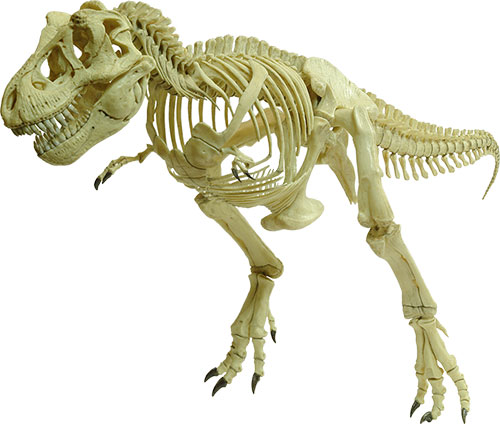As far as I'm aware, this model is the first to include gastralia (belly ribs). The detail is spectacular and it is still the best T.rex I've seen. It is of its time however: New discoveries have meant that some details are now incorrect. For example, the model does not include a furcula (wishbone) or the vestigial third finger. The hands are pronated (palm down) but should have a "handclap" orientation. The sternum and linking "rib gastralia" are inventions I believe, and inspired by the skeleton drawings of Gregory Paul (who revolutionised dinosaur skeleton articulations at the time).
This was the first natural bone reconstruction I'd ever seen and it was a revelation. Now I find the fossil-look of crumbling and misshapen rock is not nearly so inspiring!
Because the cast was so perfect and a bone color anyway, all I did was lightly stain it using inks diluted with alcohol. The benefit of staining over painting is that all the original detail is retained (layers of paint effectively putty-over fine details).
Some parts, like the legs, were cast together but I divided them into separate bones. This not only allowed re-posing but also let me space them apart to create a natural gap for soft tissue cartilage (as in the knee joint).
The original pose was a bit too dynamic so I softened it to look less like the animal was in the middle of an Olympic long-jump. To change the pose and also keep the kit as original as possible I did not glue any parts together but used brass rod-and-sleeve couplings. This allows the model to be fully disassembled and go back in its original box. Each rib, for example, has a square brass male peg that fits into a square brass-lined female aperture in the vertebrae. This is time-consuming to do but now the ribs are firmly mounted, do not swivel out of alignment and are easy to remove. If you give the brass peg a slight bend it inserts firmly into its sleeve mount with a satisfying click.
Searching the web you may find a low-cost Thai recast of this kit. Out of curiosity I purchased one of these but it was disappointing; it was roughly cast, about 6% smaller than the original, and the resin was brittle.
